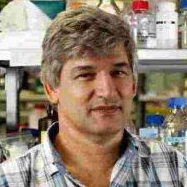Mechanisms of Mycobacterium tuberculosis Pathogenesis
A special issue of Pathogens (ISSN 2076-0817).
Deadline for manuscript submissions: closed (31 December 2017) | Viewed by 38085
Special Issue Editor
2. Africa Health Research Institute, University of KwaZulu-Natal, Durban 4001, South Africa
Interests: Mtb bioenergetics; energy metabolism; immunometabolism; human TB pathogenesis; host gasotransmitters
Special Issue Information
Dear Colleagues,
Tuberculosis (TB) is a major global public health problem and, despite substantial progress, TB is one of the most important infectious causes of morbidity and death in the world. The unique ability of M. tuberculosis (Mtb) to persist in millions of people in a dormant, drug-resistant state, sometimes reactivating to cause TB decades after the primary infection, has puzzled scientists for decades. Alarmingly, during the past decade a substantial increase in the number of patients with multidrug resistant TB and extensively drug-resistant TB has been noted.
The microenvironment within the Mtb-infected lung is dynamic and contains a wide range of different carbon sources, proteins and metabolites. This represents a biological predicament for investigation as the metabolic state of bacilli within the spectrum of lesions will differ from one another. Not surprisingly, ample data suggest that Mtb adjusts its metabolism in response to the availability of nutrients during different stages of infection.
The global TB burden anti-TB drug crisis has made understanding the molecular mechanisms of pathogenesis, and responses to actively growing and dormant Mtb, essential for improving existing therapies and identifying innovative therapeutic approaches. This Special Issue on “Mechanisms of Mycobacterium tuberculosis Pathogenesis” will focus on our current understanding of how Mtb causes disease, and opportunities for therapeutic intervention. We invite you to submit research and review manuscripts that cover any aspect of Mtb genetics, metabolism, and drug resistance, host pathogen interaction, immunology, human TB, and TB pathogenesis.
Prof. Adrie J.C. Steyn
Guest Editor
Manuscript Submission Information
Manuscripts should be submitted online at www.mdpi.com by registering and logging in to this website. Once you are registered, click here to go to the submission form. Manuscripts can be submitted until the deadline. All submissions that pass pre-check are peer-reviewed. Accepted papers will be published continuously in the journal (as soon as accepted) and will be listed together on the special issue website. Research articles, review articles as well as short communications are invited. For planned papers, a title and short abstract (about 100 words) can be sent to the Editorial Office for announcement on this website.
Submitted manuscripts should not have been published previously, nor be under consideration for publication elsewhere (except conference proceedings papers). All manuscripts are thoroughly refereed through a single-blind peer-review process. A guide for authors and other relevant information for submission of manuscripts is available on the Instructions for Authors page. Pathogens is an international peer-reviewed open access monthly journal published by MDPI.
Please visit the Instructions for Authors page before submitting a manuscript. The Article Processing Charge (APC) for publication in this open access journal is 2700 CHF (Swiss Francs). Submitted papers should be well formatted and use good English. Authors may use MDPI's English editing service prior to publication or during author revisions.
Keywords
- dormancy
- nonreplicating persistence
- drug resistance
- genetics redox homeostasis
- bioenergetics
- pathology
- immunology
- cell biology






